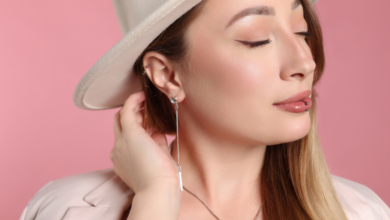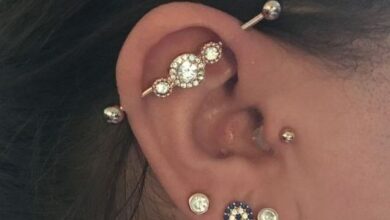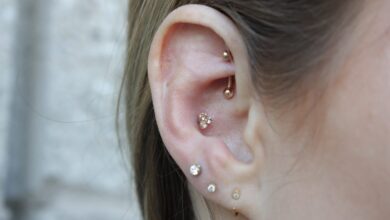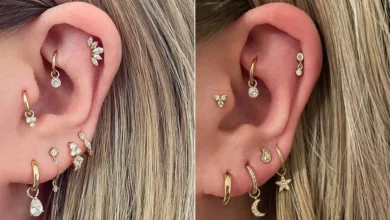
Have you ever wondered why some people’s piercings seem to reject or migrate over time? In this fascinating article, stylish.ae explores the science behind piercing rejection and migration. By delving into the various factors that contribute to this phenomenon, you’ll gain a deeper understanding of why some piercings don’t always stand the test of time. So, whether you’re a piercing enthusiast or simply curious about the intriguing world of body modification, this article is sure to captivate your interest.
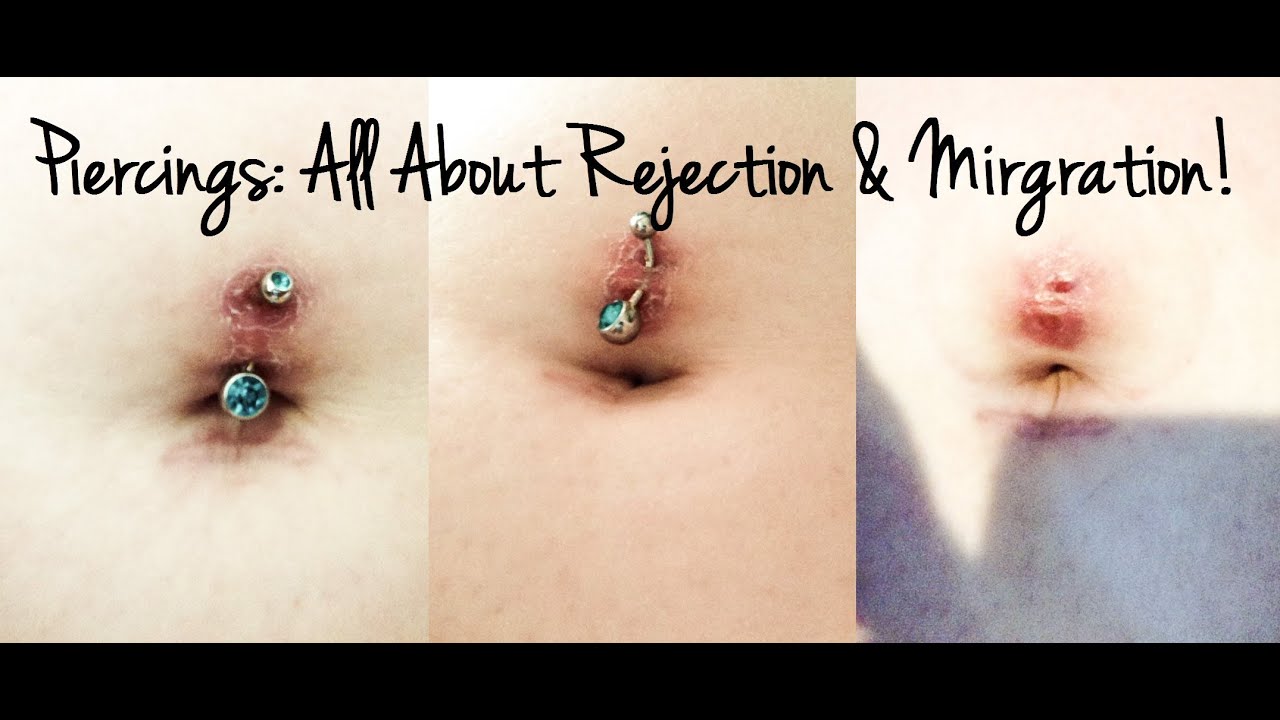
Understanding Piercing Rejection
What is piercing rejection?
Piercing rejection refers to the body’s immune response to a foreign object, such as jewelry, that has been inserted into the skin. It occurs when the body perceives the piercing as a threat and attempts to push it out, leading to the migration or complete removal of the jewelry. This rejection process can vary from person to person and can have various causes and triggers.
Factors contributing to piercing rejection
Several factors can contribute to piercing rejection. These include the individual’s genetics and immune system, health conditions and medications, age and hormonal changes, as well as skin type and thickness. It is important to consider these factors before getting a piercing to determine the likelihood of rejection.
Common types of piercings prone to rejection
Although any type of piercing has the potential for rejection, certain piercings are more prone to this complication. Surface piercings, such as belly button piercings, eyebrow piercings, and dermal piercings, are particularly susceptible due to their placement in areas with less tissue support. Additionally, piercings done on thin or soft tissues, such as the lips or tongue, may also be more prone to rejection.
Signs and symptoms of piercing rejection
Recognizing the signs and symptoms of piercing rejection is crucial in order to address the issue in its early stages. Some common indicators include redness, swelling, tenderness, itching, and the appearance of a thinning or elongated piercing tract. Discharge, such as pus or blood, may also be present. It is important to seek professional help if these symptoms persist or worsen.
Mechanisms of Piercing Rejection
Immunological response
One of the primary mechanisms behind piercing rejection is the body’s immunological response. When a piercing is inserted, the body recognizes the jewelry as a foreign object and triggers an immune response. This response involves the release of various immune cells and molecules, which attempt to remove the foreign object from the body. In some cases, this immune response can become overactive, leading to rejection.
Foreign body reaction
Another mechanism that contributes to piercing rejection is the foreign body reaction. When a piercing is inserted, the body perceives the jewelry as a foreign object that needs to be eliminated. This triggers the activation of certain immune cells and processes that attempt to encase the foreign object. The formation of scar tissue around the jewelry can result in rejection if the body’s defense mechanisms are unable to integrate the piercing.
Inflammation and tissue damage
Inflammation and tissue damage play a significant role in piercing rejection. When a piercing is inserted, it causes trauma to the surrounding tissue, leading to inflammation. This inflammation can disrupt the normal healing process and increase the risk of rejection. Additionally, excessive movement or trauma to the piercing can further damage the tissue, aggravating the rejection response.
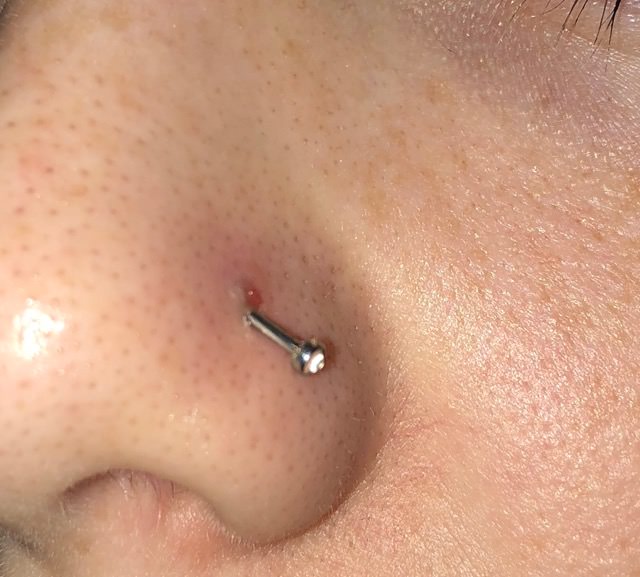
Influence of Individual Factors on Piercing Rejection
Genetics and immune system
Individuals with certain genetic factors may be more prone to piercing rejection. Genetic variations can affect the immune response and the body’s ability to tolerate foreign objects, increasing the likelihood of rejection. Additionally, individuals with compromised immune systems, such as those with autoimmune diseases or on immunosuppressive medications, may also have an increased risk of rejection.
Health conditions and medications
Certain health conditions and medications can impact the body’s ability to heal and tolerate piercings. Chronic conditions, such as diabetes or poor circulation, can impair the healing process, making the piercing more susceptible to rejection. Additionally, medications that affect the immune system or inhibit blood clotting can also increase the risk of rejection.
Age and hormonal changes
Age and hormonal changes can influence the likelihood of piercing rejection. Adolescents and young adults may be more prone to rejection due to their still-developing immune systems. Hormonal fluctuations, such as those experienced during puberty, pregnancy, or menopause, can also affect the body’s response to a piercing, increasing the risk of rejection.
Skin type and thickness
The thickness and type of skin can also impact the risk of piercing rejection. Thin or soft tissues, such as those found in the lips or tongue, may be more prone to rejection due to their lower density and weaker support. Additionally, individuals with sensitive or easily irritated skin may have a higher risk of rejection, as their skin may react more strongly to the presence of a foreign object.
Impact of Piercing Techniques on Rejection
Choosing the right piercing method
The choice of piercing method can influence the risk of rejection. It is important to choose an experienced and reputable piercer who uses hygienic techniques and follows proper sterilization protocols. Piercing methods that minimize trauma and tissue damage, such as needle piercing, may have a lower risk of rejection compared to techniques like piercing guns.
Sterilization and aseptic technique
Proper sterilization and aseptic technique during the piercing process are crucial in minimizing the risk of rejection. The use of sterile equipment and jewelry can help reduce the introduction of bacteria and other pathogens that can trigger an immune response. Piercers should adhere to strict hygiene protocols, including handwashing, wearing sterile gloves, and utilizing sterile wipes or solutions.
Piercing needle vs. piercing gun
The choice between using a piercing needle or a piercing gun can impact the risk of rejection. Piercing guns, often used in certain commercial settings, can cause more trauma and tissue damage compared to needle piercing. The blunt force of a piercing gun can increase the risk of tissue tearing and inflammation, making the piercing more susceptible to rejection. Needle piercing, on the other hand, allows for a cleaner and more precise insertion, reducing the risk of rejection.
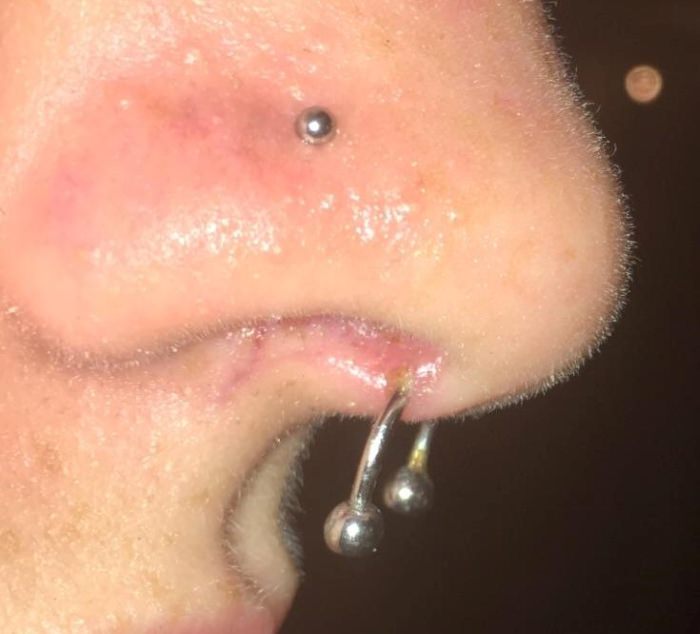
Preventing Piercing Rejection
Proper aftercare and hygiene
Proper aftercare and hygiene are essential in preventing piercing rejection. Following the piercer’s instructions for cleaning and caring for the piercing is crucial. This typically involves cleaning the piercing site with a saline or antimicrobial solution and avoiding activities that may irritate or disturb the piercing. Maintaining good overall hygiene, such as regularly washing your hands and avoiding touching the piercing with dirty hands, can also help prevent infection and rejection.
Choosing the right jewelry
Choosing the right jewelry can significantly impact the risk of rejection. Jewelry made from high-quality and hypoallergenic materials, such as titanium or surgical-grade stainless steel, is generally recommended. Avoiding nickel-containing jewelry is important, as nickel allergies are common and can lead to rejection. Additionally, opting for jewelry with a suitable size and design for the specific piercing can help minimize the risk of tissue irritation and rejection.
Avoiding trauma and excessive movement
It is important to avoid trauma and excessive movement, as these can contribute to piercing rejection. Protecting the piercing from accidental knocks, pulls, or excessive twisting can help prevent tissue damage and inflammation. Certain activities, such as contact sports or sleeping on the piercing, should be avoided or approached with caution to minimize the risk of rejection.
Understanding Piercing Migration
What is piercing migration?
Piercing migration refers to the gradual movement of a piercing from its original placement in the skin. It can occur due to various factors, such as skin tension, improper jewelry placement, healing issues, or anatomical changes. Migration can result in the piercing becoming displaced or eventually rejecting completely.
Causes and triggers of piercing migration
Several causes and triggers can lead to piercing migration. Excessive tension on the skin, often caused by improper jewelry placement or incorrect sizing, can gradually pull the piercing in a different direction. Poor healing, infection, or the formation of excessive scar tissue can also contribute to migration. External factors, such as trauma or pressure due to tight clothing, can further exacerbate the migration process.
Risk factors for piercing migration
Certain factors may increase the risk of piercing migration. Piercings located in areas with thin or mobile skin, such as the navel or nostrils, may be more prone to migration due to their anatomical characteristics. Additionally, improper jewelry choices, such as using jewelry that is too heavy or too long, can increase the risk of migration. Individual factors, such as healing capabilities and lifestyle habits, can also play a role in the vulnerability to migration.
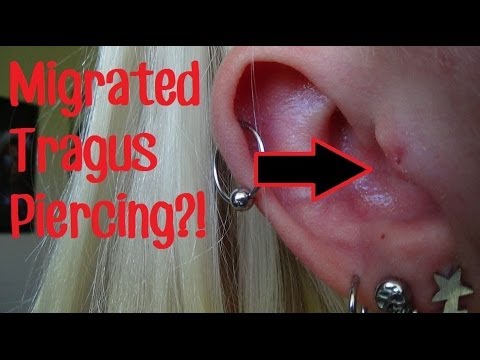
Differentiating Piercing Rejection from Migration
Distinct characteristics of rejection
Piercing rejection and migration are two distinct processes, although they are often confused. Rejection involves the body’s immune response to a foreign object, resulting in the pushing out or expulsion of the jewelry. Rejected piercings are typically preceded by signs of inflammation, redness, and discomfort. As the rejection progresses, the piercing may become elongated or thin, with a visible reduction of tissue surrounding the jewelry.
Distinguishing signs of migration
Piercing migration can be recognized by certain signs that set it apart from rejection. The piercing gradually shifts from its original placement, sometimes visibly creating an angle or altering the piercing’s position. As the migration progresses, the jewelry may move closer to the surface of the skin. Unlike rejection, migration may not always involve visible signs of inflammation or tissue thinning, although tenderness or discomfort in the area may be present.
Mechanisms of Piercing Migration
Skin tension and pressure
Skin tension and pressure are major contributors to piercing migration. When the jewelry is inserted into the skin, the surrounding tissues may exert tension on the jewelry. This tension, compounded by movement or pressure, can gradually cause the piercing to shift from its original placement. Areas with thin or stretchy skin are particularly vulnerable to skin tension-related migration.
Jewelry placement and size
Improper jewelry placement and sizing can lead to migration. Jewelry that is inserted too shallow or too deep can increase the tension on the skin, causing the piercing to move. Similarly, jewelry that is too heavy or too small in diameter may also contribute to migration. It is crucial to consult with a professional piercer who can guide you in choosing the appropriate jewelry size and placement for your specific piercing.
Healing and scar tissue formation
The healing process and the formation of scar tissue can influence piercing migration. If the piercing does not heal properly or if excessive scar tissue forms, it can cause tension and pulling on the jewelry, leading to migration. Healing complications, such as infection or improper aftercare, can contribute to the development of scar tissue and increase the risk of migration.
Migration due to anatomical changes
Piercing migration can also occur due to natural anatomical changes. As the body grows or changes, especially during adolescence, the skin and underlying tissue may undergo alterations. These anatomical changes can affect the placement and tension on the piercing, resulting in migration over time. It is important to consider these potential changes when choosing a piercing location.
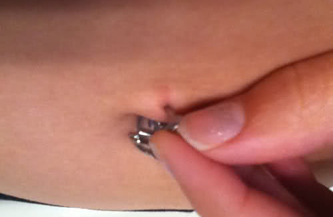
Preventing Piercing Migration
Choosing suitable jewelry and size
Choosing suitable jewelry and size is vital in preventing piercing migration. Opt for jewelry made from lightweight materials to minimize tension on the skin. The appropriate size should accommodate the specific piercing without exerting excessive pressure or allowing for too much movement. Consulting with a professional piercer can help ensure that the jewelry is appropriate for your piercing needs.
Adjusting jewelry placement
Proper placement of the jewelry can help prevent migration. A skilled piercer should carefully consider the anatomical characteristics and assess the tension on the skin. Ensuring that the jewelry is inserted at the correct depth and angle can help minimize the risk of migration. If you suspect your piercing is migrating, seek the advice of a professional piercer who can determine if adjusting the jewelry placement is necessary.
Avoiding trauma and excessive movement
Minimizing trauma and excessive movement is key in preventing piercing migration. Avoid activities that can exert excessive tension or pressure on the piercing, such as playing contact sports or wearing tight clothing. Be mindful of any accidental tugs or pulls on the jewelry, as these can contribute to migration. It is also essential to follow proper aftercare guidelines to promote healing and reduce the risk of complications.
Addressing Piercing Rejection and Migration
Seeking professional help
If you suspect that your piercing is experiencing rejection or migration, it is important to seek professional help. A reputable piercer or healthcare provider experienced in managing piercing complications can properly assess your situation and provide guidance. They can evaluate the severity of the rejection or migration and recommend appropriate steps to address the issue.
Removing the rejected or migrated piercing
In some cases, removing the rejected or migrated piercing may be necessary. Continuing to wear jewelry that is being rejected or has migrated significantly may cause further complications and delay the healing process. A professional piercer or healthcare provider can safely remove the jewelry and provide guidance on alternative options if desired.
Treatment options for associated complications
Depending on the severity of the rejection or migration, additional treatment options may be required. Complications such as infection, excessive scarring, or tissue damage may need medical intervention. Treatment options may include the administration of antibiotics or other medications, wound care, or even surgical procedures to repair damaged tissues. It is crucial to follow the advice and recommendations of a healthcare professional to ensure proper care and healing.
In conclusion, understanding the mechanisms and factors contributing to piercing rejection and migration is crucial for individuals considering or experiencing piercings. By recognizing the signs and taking preventive measures, such as choosing the right piercing method, jewelry, and aftercare, individuals can enhance their chances of successful piercing experiences and minimize the risk of rejection or migration. However, if complications arise, seeking professional help promptly is essential to address and manage the situation effectively.

